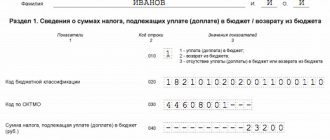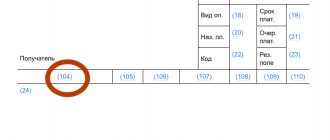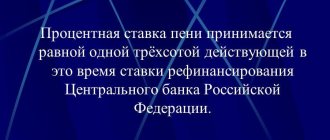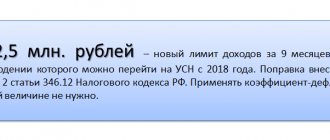The Unified Agricultural Tax is a preferential regime for agricultural producers, allowing them to pay the minimum to the budget. Like other special regimes, agricultural tax payers were exempt from paying many taxes, but this year the situation has changed. How to combine the payment of Unified Agricultural Tax and VAT in 2019, and how will these innovations affect the tax burden of agricultural producers?
VAT for agricultural enterprises
According to the new rules, the single agricultural tax no longer exempts enterprises from VAT deductions (clause 3, clause 3, article 346.1 of the Tax Code of the Russian Federation). All previously provided grounds for receiving benefits under this fee are canceled, and from January 1, 2021, all Unified Agricultural Tax agents pay a value added duty according to the general rules - in the amount of 20% (clause 3 of article 164 of the Tax Code of the Russian Federation, clause 12 of article 9 No. 335-FZ dated November 27, 2017).
Previously, agricultural enterprises and individual entrepreneurs had the opportunity to include all funds received with VAT as expenses. Now they have 2 options to choose from (depending on the situation):
- deduct tax;
- add it to the product price.
The obligation to deduct VAT entails other requirements:
- issue invoices;
- regularly submit VAT reports to the tax authorities;
- maintain appropriate documentation : books of purchases and sales, etc. (clause 3 of article 169, clause 5 of article 174 of the Tax Code of the Russian Federation).
Object of tax optimization.
The use of a special regime in the form of Unified Agricultural Tax from 01/01/2019 does not relieve the VAT payer from the obligation. But the need to pay tax cannot be clearly interpreted as a negative factor.
Firstly, as you know, one of the conditions for applying the deduction according to paragraphs. 1 item 2 art. 171 of the Tax Code of the Russian Federation is the acquisition of goods (work, services) for the implementation of transactions recognized as objects of VAT. Consequently, having become VAT payers on the sale of agricultural products, producers simultaneously received the right to tax deductions.
Secondly, by virtue of paragraph 2 of Art. 164 of the Tax Code of the Russian Federation, sales of main types of agricultural products are taxed at a preferential VAT rate of 10%.
Thirdly, to apply VAT it is not necessary to abandon the Unified Agricultural Tax, and the rate for this tax is noticeably lower than the income tax rate (6% versus 20% with a similar tax base). And finally, the right to exemption from VAT payment obligations has been introduced for small agricultural producers.
The combination of the listed norms provides small enterprises operating under a special regime in the form of unified agricultural tax with an alternative:
- or remain a VAT payer, pay this tax on the sale of agricultural products at a rate of 10% and claim deductions for “input” VAT;
- or be released from the obligation to pay VAT, the “input” tax should be taken into account in the cost of goods (work, services) in the manner established by paragraphs. 3 p. 2 art. 170 Tax Code of the Russian Federation.
Right to exemption from paying VAT
Despite the innovations, agricultural companies retained the opportunity to be exempt from VAT (clause 2, clause 1, article 145 of the Tax Code of the Russian Federation). A special procedure is provided for the procedure; it differs from the classical requirements for tax exemption (No. 335-FZ).
Enterprises and individual entrepreneurs on the Unified Agricultural Tax must fulfill the following conditions:
- apply for tax exemption in the year of transition to the special regime;
- revenue from agricultural activities for the previous 2021 should not exceed 100 million rubles.
For subsequent tax periods, different profit values are established, giving the right to VAT exemption. They decrease every year by 10 million for 5 years. Thus:
- in 2021, revenue should be no more than 90 million rubles;
- 2020 - no higher than 80;
- 2021 - no more than 70;
- 2022 and subsequent – no more than 60 million.
To be exempt from paying the duty, you must:
- submit a written application to the Federal Tax Service Inspectorate;
- comply with the filing deadline - no later than the 20th day of the month following the emergence of the right to the benefit;
- annually confirm the acquired right.
If the benefit is planned to be extended, a corresponding notification is sent to the Federal Tax Service for exemption from the fee for the next 12 months, attaching documents confirming all income received for the reporting year. This must be done no later than the 20th day of the month following the expiration of one calendar year from the date of receipt of the benefit.
The duty exemption is issued for 12 months. During this period, the company cannot remove its beneficiary status.
The law does not allow voluntary renunciation of benefits (clause 4 of Article 145 of the Tax Code of the Russian Federation). The right to it can only be lost. This requires that during one tax period under the Unified Agricultural Tax regime:
- the amount of profit received from agricultural activities exceeded the amount of income for the year in which the taxpayer exercised the right to deduction (means the amount excluding VAT);
- the company or individual entrepreneur sold excisable goods during the year.
If the rules for receiving benefits are violated, the right to it is lost from the 1st day of the month in which the failure to fulfill the conditions was recorded. The amount of the duty calculated for the month in which the violation occurred must be restored and paid to the state treasury in the prescribed manner (paragraph 3, paragraph 5, article 145 as amended by Law No. 335-FZ).
You can only receive the benefit once. After its loss, the company has no right to claim a second exemption from fiscal fees.
Results
From 2021, persons applying the Unified Agricultural Tax are included in the number of VAT payers. However, at the same time they had the opportunity to take advantage of the exemption from paying this tax. The exemption is available either to those starting to work for the unified agricultural tax, or to those who are already using it, but have incomes that do not exceed the established limit for the year preceding the start of the application of the benefit.
Refusal to apply VAT is voluntary.
Therefore, it is enough for the Unified Agricultural Tax payer to notify the Federal Tax Service about this in writing. However, he will not be able to voluntarily return to work with VAT. The obligation to charge this tax will arise only in a situation of non-compliance with the conditions giving the right to a benefit. In this case, the Unified Agricultural Tax payer will lose the right to once again resort to exemption. You can find more complete information on the topic in ConsultantPlus. Free trial access to the system for 2 days.
Nuances of working with taxes during the “transition” period
With the advent of the obligation to pay VAT, enterprises and individual entrepreneurs on the Unified Agricultural Tax have the right to accept the received tax as a deduction (if goods, works, services are used in transactions subject to VAT).
If an agricultural enterprise has entered into a cooperation agreement with a partner until 2021, then it may find itself in a “transitional” situation. If work under the contract began in 2021, then the VAT received on the transaction will not be taken into account in expenses. The peculiarity is that it will not be possible to deduct this amount by law, since its accrual refers to the period when agricultural enterprises were not VAT tax agents.
This scenario is provided for by Law No. 335-FZ. In accordance with it: any amounts of VAT incurred during the acquisition of goods (services) or paid when importing objects into Russia that were not classified as expenses (that is, before the obligation to pay the tax arose) are taken into account in the price of the goods (clause 4 of Art. 8 of Law No. 335-FZ).
In practice, for an enterprise this means that value added duty is considered for objects (goods, works, services) that are not subject to taxation.
A similar clarification was provided by the Ministry of Finance of the Russian Federation: for all goods and services received under a contract before January 1, 2019, VAT is not deductible, but is included in the price of the object (Letter of the Ministry of Finance of the Russian Federation dated 02/07/2018 No. 03-07-11/7258).
Calculation part.
It is logical to assume that if the rate of “input” VAT is 20%[3], and the rate of “output” VAT is 10%, then under certain conditions no additional tax is due. To see the effect of the difference in rates, let's simulate an example.
Let the revenue be 50 million rubles, VAT on revenue (10%) is 5 million rubles. If the share of material costs subject to VAT in revenue is 50% (25 million rubles), then VAT at a rate of 20% will be 5 million rubles. Under these conditions, there will be no tax payable (“input” tax is equal to “output”). Thus, if the share of material costs exceeds half of the revenue, it is more profitable to remain a VAT payer.
Let's change the conditions a little. To maintain the right to work in a special regime in the form of unified agricultural tax, it is necessary to maintain the share of agricultural products at a level of at least 70% of total revenue (Article 346.2 of the Tax Code of the Russian Federation). Returning to our example, let's say that the company is operating at the limit. Then the revenue subject to VAT at a rate of 10% will be 35 million rubles. (50 million rubles x 70%), VAT, respectively, is 3.5 million rubles. Revenue subject to VAT at a rate of 20% is 15 million rubles. (50 – 35), VAT – 3 million rubles. Total VAT on sales (“output” tax) will be equal to 6.5 million rubles. In this case, in order to avoid additional tax payment to the budget, material costs should be 32.5 million rubles. or 65% of revenue. “Input” VAT in this case will be the same 6.5 million rubles. (50 million rubles x 65% x 20%), which resets the tax payable to the budget.
From the diagrams we move on to a detailed calculation of the tax burden for various work options.
Input data
Annual revenue excluding VAT – 50 million rubles. The share of products taxed at a VAT rate of 10% is 75%, and at a VAT rate of 20% is 25%. Material costs, subject to VAT at a rate of 20%, excluding tax, amount to 30 million rubles. Salary with deductions – 10 million rubles.
The company analyzes whether VAT exemption will be beneficial and decides what pricing policy to choose for customers in case of VAT waiver.
Comparative efficiency of work with (without) VAT (thousand rubles)
| Indicators | Calculation method | VAT INCLUDED | Without VAT, prices reduced | Excluding VAT, prices not reduced |
| Revenue from agricultural products | Page 1 = 50,000 x 75%, or Page 1 = 50,000 x 75% x 1.1 | 37 500 | 37 500 | 41 250 |
| VAT 10% | Page 2 = page 1 x 10% | 3 750 | — | — |
| Other revenue | Page 3 = 50,000 x 25%, or Page 3 = 50,000 x 25% x 1.2 | 12 500 | 12 500 | 15 000 |
| VAT 20% | Page 4 = page 3 x 20% | 2 500 | — | — |
| Total revenue excluding VAT | Page 5 = page 1 + page 3 | 50 000 | 50 000 | 56 250 |
| Total revenue including VAT | Page 6 = page 1 + page 2 + page 3 + page 4 | 56 250 | 50 000 | 56 250 |
| Costs (fuels and lubricants, fertilizers, etc.) | Page 7 | 30 000 | 30 000 | 30 000 |
| VAT 20% | Page 8 = page 7 x 20% | 6 000 | 6 000 | 6 000 |
| VAT payable | Page 9 = page 2 + page 4 - page 8 | 250 | — | — |
| Salary with insurance contributions | Page 10 | 10 000 | 10 000 | 10 000 |
| Profit | Page 11 = page 1 + page 3 - page 7 - page 10, or Page 11 = page 1 + page 3 - page 7 - page 10 - page 8 | 10 000 | 4 000 | 10 250 |
| Unified agricultural tax rate (%) | Page 12 | 6 | 6 | 6 |
| Unified agricultural tax | Page 13 = page 11 x page 12 | 600 | 240 | 615 |
| Tax burden | Page 14 = page 9 + page 13 | 850 | 240 | 615 |
| Net profit | Page 15 = page 11 - page 13 | 9 400 | 3 760 | 9 635 |
| Tax burden (%) | Page 16 = page 14 / page 15 | 9,0 | 6,4 | 6,4 |
Explanations for the table. Three options are presented:
1) with payment of VAT;
2) without VAT and a reduction in prices by the amount of tax (break-even is ensured for wholesalers and manufacturers);
3) without VAT with prices kept at the same level (the price remains indifferent for the end consumer).
Line 1 shows revenue subject to VAT at a rate of 10%, line 3 shows revenue subject to VAT at a rate of 20%.
Profit (line 11) is calculated by deducting expenses from income. When working without VAT, the costs include “input” VAT.
The absolute tax burden (line 14) consists of VAT and Unified Agricultural Tax. The relative tax burden (line 16) shows the ratio of total taxes to net income.
Conclusions from the table. For all options, the tax burden is small, which is explained by the use of a low-tax regime in the form of the unified agricultural tax and a preferential VAT rate of 10%. Much stronger discrepancies are observed in the amount of profit remaining at the disposal of the enterprise.
Ultimately, a low tax burden is not an end in itself; it is more important to obtain maximum profit. Under these circumstances, the standard scheme for working with VAT looks like a very acceptable option. There is no point in reducing selling prices by the amount of VAT; this critically reduces profits. And it’s not a fact that potential wholesale buyers will appreciate such a step. If the sale is retail, then it is beneficial to exempt yourself from VAT and get the highest profit.
How will the VAT increase affect prices?
What impact will the upcoming changes have on pricing and what is the threat of raising VAT to 20 percent - perhaps the most pressing questions for consumers on the eve of the New Year holidays. Objectively, nothing big will happen and here’s why:
- In highly competitive business areas, entrepreneurs will strategically “hold back” prices. This is explained by the fact that purchasing activity in a situation of anticipation of a price jump will be very susceptible to even minimal price increases. Raising the price means, roughly speaking, giving your own client to those competitors who did not panic and did not change the price list.
- In quieter industries, designed for business rather than retail, prices may increase slightly - but in parallel with prices, the level of “providing comfort” will also increase. Additional costs will ultimately turn into benefits for the client - in pursuit of loyalty from the supplier or in all available ways - package offers, discounts, installment plans, etc.
We will reset the online cash register for 20% VAT remotely in 30 minutes. From 600 rubles!
Leave a request and receive a consultation within 5 minutes.







